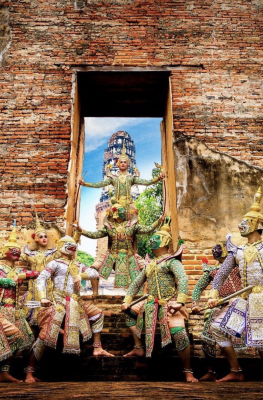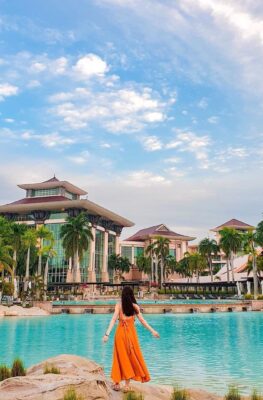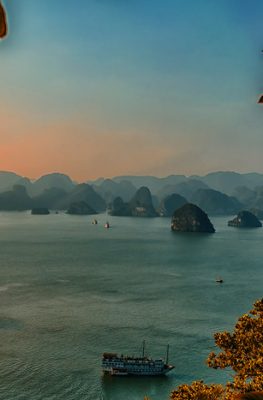Published on October 15, 2013

ASEAN hosts hundreds of diverse ethnic groups, some of which are indigenous to Southeast Asia, and others that migrated from South Pacific islands and the mountains of Southern Asia and China. Though the majority settled in the fertile lowlands and river valleys, some decided to remain on higher ground. Most hill tribes reside in northern Laos, Myanmar, Thailand, and Viet Nam, but southern ASEAN countries also host remote mountain people that few have seen. Group tours are available to visit hill tribes in several countries, while some of the more distant hill tribe villages require private guides to make the way. Still, all offer great opportunities to interact with rarely seen ethnic groups, while experiencing their little-known cultures and lifestyles.
Brunei Darussalam: Though most ethnic minorities in Brunei reside on the coast or in the lowlands, a few groups live in the highlands of the country’s south. The Kayan in Busang, deep in the southern hills, account for only 6,900 of Brunei’s population of some 400,000, and most practice they’re own spirit worship. According to the Joshua Project, less than 100 Punan-Nibong remain, and they live in the Central Highlands, west of the Baram River. The 1,100 Bisaya practice Islam, and live in hilly villages around Seria Town near the Sarawak border.
Cambodia: Cambodia’s highest peaks with hill tribes are mostly in the country’s northeast near the Viet Nam and Laos borders in and around Virachey National Park, as well as in the west, and many can be visited on tours. A small group of 3,800 Lamam huddle in that three-country corner (2,100 in Cambodia), while some 8,200 Brao live in isolated villages in Ratanakiri Province at the Lao border. They are known for stretched earlobes from wearing elephant tusk earrings in the past, and some still bare facial tattoos. The 7,200 Kravet live nearby, as do the 21,000 Jarai, who migrated from Viet Nam’s Central Highlands, and unlike many Cambodian tribes, they are not Khmer, but likely came from ASEAN islands. Some 11,000 Chong occupy parts of Pursat Province in the country’s northwest, near Thailand’s Chanthaburi and Trat Provinces.
Indonesia: Indonesia’s 750-plus ethnic groups tend to live on the coast or along waterways, though a handful remain mountain dwellers. Pockets of small indigenous people live in West Kalimantan Province near Sarawak in the remote Kelabit Highlands. Visitors can meet the 40,000-some Kenyah (“Upriver People”) in communities located near the Baram and Balui Rivers’ headwaters. The Murut (“Hill People”) and the Lundayeh, who were among the last tribes to renounce headhunting, reside around Sesayap River tributaries near Borneo. South Sulawesi is home to a pair of hill tribes: the rice-farming Bentong in the 500-metre-high hills about a two-hour drive from Makassar, and the Konjo Pegunun, who primarily live in the mountainous far-west Konjo region. Adventurers can also find the Tanglapui in the extreme east on Alor Island.
Lao PDR: Those seeking a hill tribe experience in Laos flock to the mountainous north-western Luang Namtha Province, where a variety of operators offer tours. Some hill tribes live close to rivers, while others reside near peaks, but all are distinct. Visitors seek the Akha to witness their strict conduct code, “The Akha Way”, while the Khmu, known for their hunting and gathering skills, also welcome tourists to their villages populating many trekking routes. Those interested in old-style loom weaving can watch Tai Dam and Tai Lue women at work, or try the task themselves. The Hmong mostly live on the mountaintops, and live off the forest and livestock. Travellers to southern Laos can visit the Phouthai in Savannakhet’s mountainous border with Viet Nam, while adventurers can head to the Ho Chi Minh Trail in Salavan Province to meet the rarely visited Ngae, Souay, and Ta-Oy. Source: ADB-Laos Sustainable Tourism Development Project.
Malaysia: Malaysia may have plenty of mountains, but only a few ethnic groups inhabit them, and they are spread throughout the country. In Kelantan, visitors will find the nomadic Bateq (“people of our group”), who cannot recount their history. Sarawak is home to two different hill tribes: the Punan mostly farm using the slash and burn method to clear fields or log, while the Murut, once a head-hunting tribe, occupy the hills along the Kalabakan River. Visitors can also search for the Jah Hut in villages dotting the foothills of Jerantut in Selangor, where they can buy woodcarvings and rattan handicrafts.
Myanmar: Most of Myanmar’s accessible hill tribes reside in the north-eastern Shan State’s mountains near the Laos and Chinese border. More than 4 million Buddhist Shan people, who mostly farm rice along the Salween River, dominate the area. The Shan Akha tend to shift their locations, never calling one mountainside village home. The Karen and related Pa-o occupy the south-western mountains of Shan and northern Karen State, and many live in the around the towns of Taunggyi and Kalaw near Thailand. About 3,000 Yellow Lahu occupy the mountains near Laos, and are considered one of the more primitive groups, surviving by hunting and forest foraging. The Wa (“Mountaineer”) in north-eastern Shan around the upper Salween River migrated from China, and once headhunted to ensure a good harvest. More difficult to reach hill tribes live in the western Chin State mountains, having migrated from Northern Plain.
Philippines: Most easy-to-access Philippine hill tribes live on Luzon and Mindanao Islands, but still remain relatively isolated. A sampling of Luzon finds the Kalinga in the north, the Alta in the eastern Bongabon foothills, and the Agta on Mount Iriga. Mindanao hosts the Manobo in the north-central area, the Bagobo near Davao on the eastern slopes of Mount Apo, and the Bagobo on the western mountainside. The Yakan on Basilan and Sakol Island mostly farm using ploughs drawn by water buffaloes, and they mainly grow rice, cassava, and coconuts. The more adventurous can seek the Tawbuid on Central Mindoro Island. Tours can be arranged with local tour operators.
Thailand: Thailand is home to several hill tribes, mostly located in the northern provinces. Visitors to Chiang Rai and Chiang Mai will find the Akha, and their unique way of life, the Dara-Ang who lack a written language, and the Yao who originated in the Tibetan Mountains. Also in these two provinces, along with Mae Hong Son, Phayao, Tak, Kampaengphet, Phetchaboon, Sukhothai, and Lampang, travellers can meet the Lisu, who migrated from Myanmar, and interact with the Hmong who live near mountain rivers. The Kachin arrived in the hills of Chiang Mai from Myanmar, while the Karen, who also arrived from Myanmar, settled in the forested mountain areas of Mae Hong Son, Chiang Mai, Ratchaburi and Petchaburi Provinces. The Lawa were the first to inhabit Chiang Mai, while those searching for the H’Tin will only find them in Nan. Source: Sawadee.
Viet Nam: The Sapa region in north-western Viet Nam is home to several hill tribes living among rice terraces and lush vegetation, with many ethnic groups to be found on Mount Fansipan. Visitors will have the opportunity to interact with eight different ethnic minority groups in Sapa, some of who migrated from China, Laos and Myanmar. The Hmong and Yao are among the most populous, though there are small clusters of Tay, Giay, Muong, Thai, Hoa, and Xa Pho. Many of these mountain people offer homestays and make and sell handicrafts in their villages and larger town markets. Those heading to the Central Highlands can also find small communities of hill tribes, especially further inland. Source: Wikitravel.
Source: Unless otherwise specified the primary source of information was The Joshua Project.






